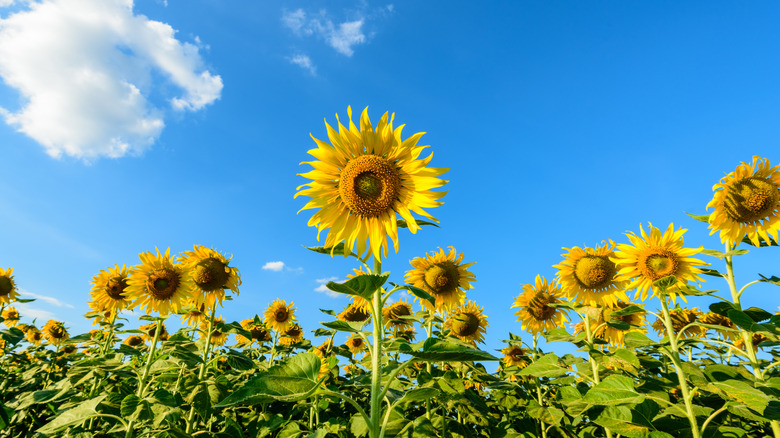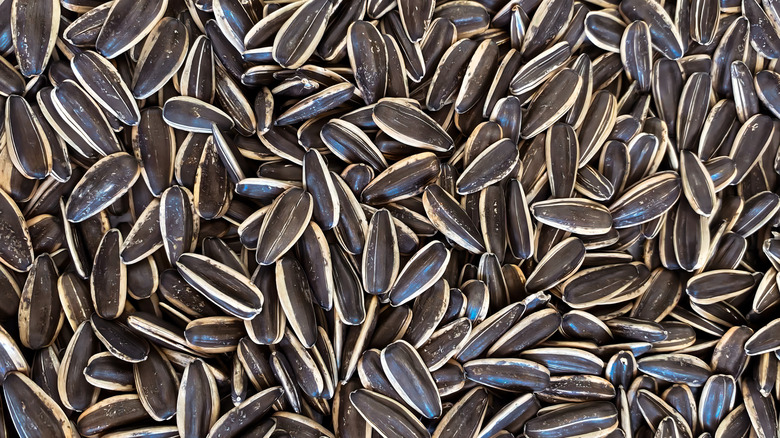Should You Be Cutting Sunflowers Back In The Fall?
Giants among flowers, sunflowers (Helianthus annuus) can grow up to 12 feet tall. Their round heads aren't a single blossom; they're made up of hundreds of tiny blooms that become the large black seeds that birds, insects, and small mammals enjoy. The animals that scavenge these seeds rely on sunflowers as a food source, which is the reason why you shouldn't cut these plants back each fall.
Instead, both you and local wildlife can benefit from sunflowers when you avoid pruning them. You can enjoy continuous sunflower blooms all season and leave a crop for wildlife by growing them in succession. Since sunflower seed heads don't drop immediately; they remain a food source for birds such as chickadees and goldfinches.
Leaving your sunflowers unharvested in the fall not only provides food to local wildlife, but also a necessary habitat over the winter. The dead stalks become safe places for bees to lay eggs or hibernate in. If you find the dead stalks unsightly, you can cut them down and create a brush pile in a hidden area of the lawn. Rabbits and squirrels as well as amphibians and insects will use it as a safe space for the winter.
Why leaving sunflowers alone is beneficial
Sunflowers don't just provide food and habitat to wildlife, they also add visual interest to your winter garden landscape as other flowers fade and die. And these perennials will still return year after year even you don't prune or deadhead them at the end of their bloom cycle. Plus, leaving these flowers can benefit soil health for next year's flowers.
You can grow sunflowers for yourself and leave a crop for wildlife at the end of the season by growing them in succession. Time your plantings over the course of the season so that as one crop fades, another will begin to bloom. You can then harvest some sunflowers while they're in full bloom for your floral arrangements, craft projects, or to press for sunflower oil. For floral arrangements like a trendy wildflower tablescape, cut single bloomed flowers back to the desired length at a 45 degree angle. This isn't a must with multi-bloomed varieties. If you're harvesting the seeds for crafts or culinary uses such as roasted sunflower seeds or as a base for vegan cheese, simply cut the flower head off the stalk.
Deer like to eat young sunflowers, so protect your plants with a fence that keeps deer out or repellents until they're established. Avoid using commercial insecticides to keep these flowers healthy because they indiscriminately kill both damaging and beneficial insects and can harm the wildlife feeding on the plants.

